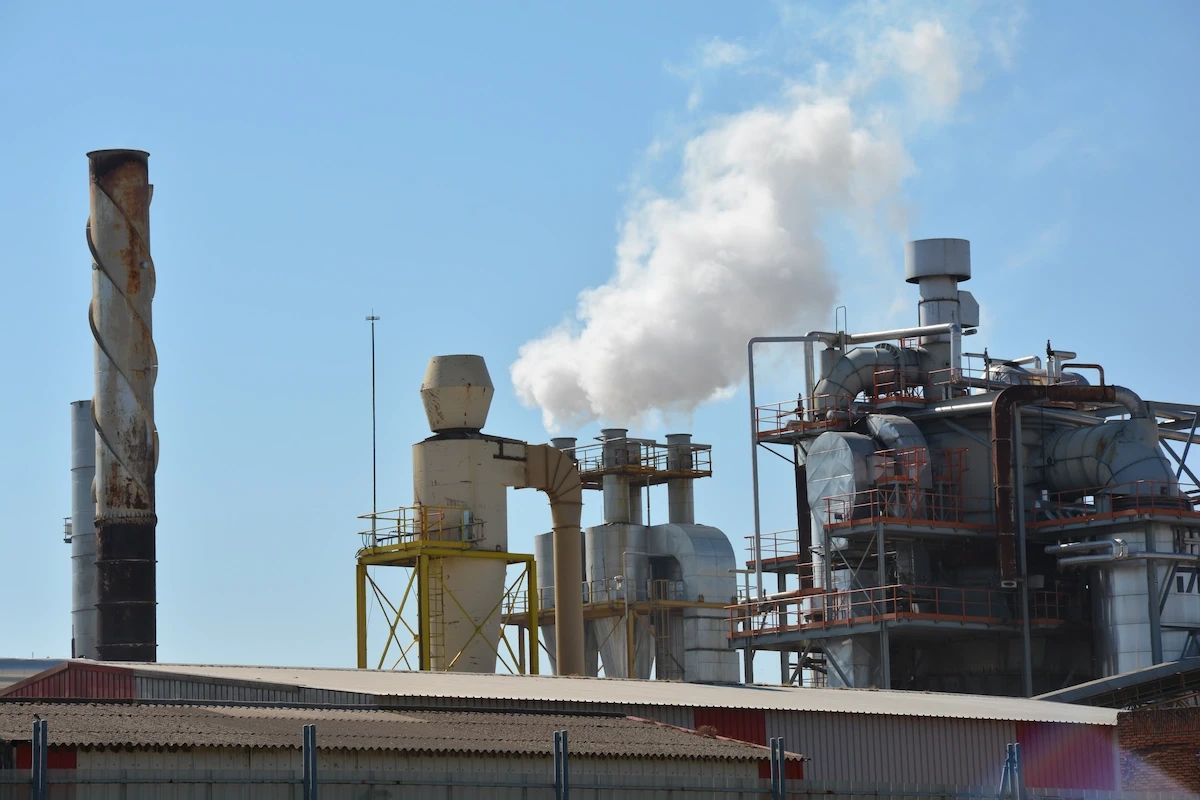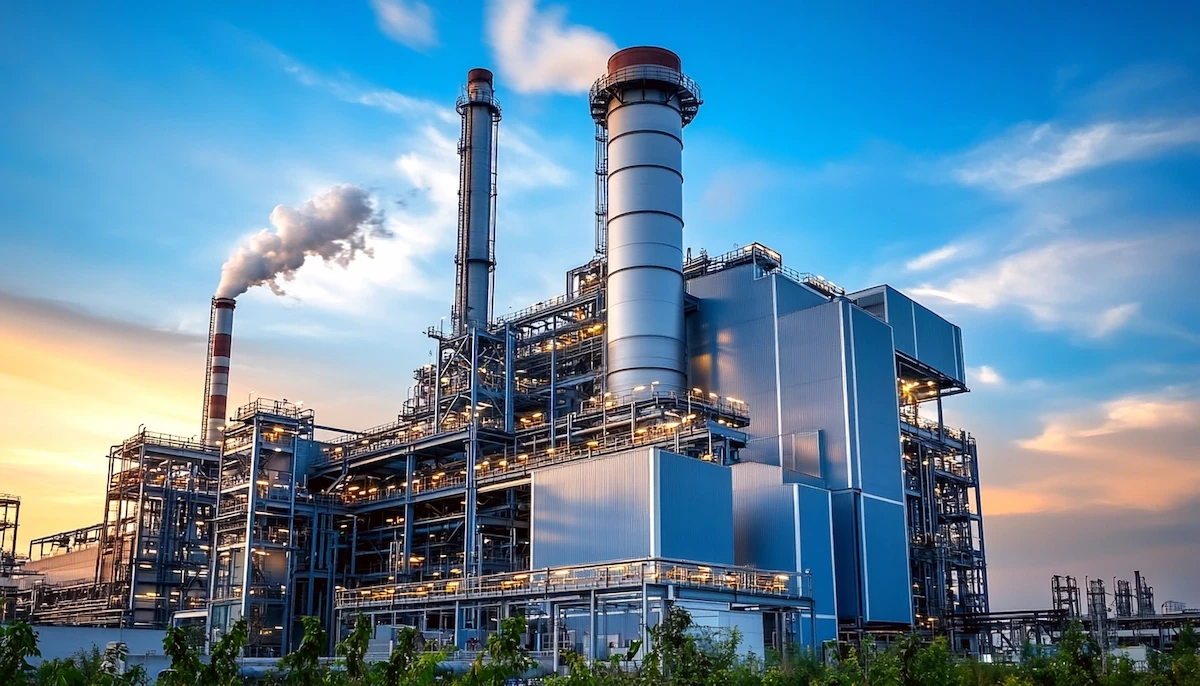
26-11-2025
What Is a Scrubber & What Are the Advantages for Industry?
Have you ever heard about a scrubber? A scrubber is one of the plant facilities used to reduce air pollution. As a result, the air is cleaner, and you can lower greenhouse gas emissions. So, what is a scrubber, and what are its types? To learn more about it, read this article until the end!
What Is a Scrubber?

A scrubber is designed to remove pollutants from the exhaust gas and reduce air pollution. In general, a scrubber can be found in exhaust gas-emitting facilities, such as factories or vessels.
A scrubber aims to reduce the irritating effects of air pollution and eliminate the foul odor it causes. After passing through a scrubber, the exhaust gas can be safely disposed of.
In addition, a scrubber is used across many industries, including the pharmaceutical and chemical industries, because it is highly versatile. Generally, a scrubber “washes” the exhaust gas using a special liquid.
Then, pollutants in the gas that come into contact with the liquid will dissolve and settle in the liquid. The liquid used can be organic or inorganic, depending on the needs. In fact, several chemical compounds or microorganisms can be added to the washing liquid to neutralize the dissolved gas particles.
Now, what kind of pollutants must be eliminated from the exhaust gas? A scrubber is utilized to remove sulfur dioxide, hydrogen sulfide, ammonia, chlorine gases, nitrogen dioxide, volatile organic compounds (VOCs), sulfuric acid, and many other substances.
Every scrubber facility is tailored to remove specific pollutants, making it easier to clean exhaust gas more effectively.
Read also: How to Reduce Carbon Emission in 8 Effective Ways
Types of Scrubbers
There are two types of scrubbers widely used in the industries: dry scrubbers and wet scrubbers. A dry scrubber uses a solid medium to remove pollutants, while a wet scrubber uses a special liquid.
Its use depends on the company's needs, the desired level of efficiency, the types of pollutants, water-use restrictions, and applicable environmental regulations. The following is a detailed explanation of the kinds of scrubbers:
1. Dry Scrubbers
Dry scrubbers use dry absorbents to remove pollutants. The substances used are usually dry powders or lime. When the absorbent is fed into the gas discharge system, it comes into contact with the contaminants, triggering a chemical reaction.
A control device then collects the reaction products and the remaining absorbent substance. They are then disposed of safely or recycled in accordance with company regulations.
2. Wet Scrubbers
Wet scrubbers use a special liquid to clean the exhaust gas. They are divided into three additional categories: open-loop, closed-loop, and hybrid scrubbers.
A. Closed-loop Scrubber
Closed-loop scrubbers typically use clean water mixed with chemicals to remove pollutants from exhaust gases. When pollutants pass through this water, a chemical reaction occurs. For example, when sulfur oxides react with the cleaning medium, sulfuric acid is formed.
The alkaline properties of the chemically treated water then neutralize the sulfuric acid. The water from this cleaning process is recycled. Before disposal, the water must be treated again to ensure it is environmentally friendly.
B. Open-loop Scrubber
An open-loop scrubber is a facility that uses seawater to absorb pollutants from exhaust gases and neutralize them. In this scrubber, exhaust gases enter the cleaning system and come into direct contact with seawater.
Just like in a closed-loop system, sulfuric acid is formed from the contact between sulfur oxides and seawater. The sulfuric acid is neutralized with seawater. Then, the used cleaning water is treated until it can finally be discharged into the sea.
However, this used water must meet the requirements of MEPC 184(59), a regulation of the International Maritime Organization that governs the discharge of wash water. Some of the regulated parameters include water pH, turbidity, and PAHs (polycyclic aromatic hydrocarbons).
C. Hybrid Scrubber
Hybrid scrubbers are cleaning facilities using both methods above. This flexibility makes them more practical, especially when the factory only has clean water or seawater at one time.
Aside from those three, there is also a Venturi scrubber. It uses liquid, usually water, to capture pollutants. When exhaust gas goes into a scrubber, the water will be injected and atomized into water droplets due to turbulence inside the facility.
Then, the exhaust gas’s velocity slows down, allowing droplets to capture more pollutants. After that, the clean gas will be separated from the cleaning water.
Read also: How to Stop Global Warming in 7 Easy Ways: Must Note!
Advantages of Scrubbers for Industries

A scrubber is an exhaust gas cleaner used for various purposes. Below are the main advantages of a scrubber you must know:
- Adhering to the regulation: A scrubber cleans the gas from the manufacturing process to comply with existing environmental laws.
- Improving air quality: A scrubber could reduce airborne pollutants to make the air better.
- Personalizable: A scrubber is quite flexible and versatile, making it easier to personalize to the plant’s needs. For example, you can design the scrubber according to the pollutants.
- Energy efficient: Many modern scrubbers implement energy-efficiency measures to optimize processes.
- Reducing greenhouse gas emissions: The primary purpose of a scrubber is to capture hazardous substances in exhaust gas, preventing adverse environmental and human impacts.
That is all the information you need to know about scrubbers. Scrubbers are proper facilities for reducing air pollutants and improving air quality. Not only that, but a scrubber also demonstrates the industry's responsibility towards the environment.
Regarding industrial responsibility towards the environment, Chandra Asri Group, as a leading chemical, energy, and infrastructure solutions company in Southeast Asia, has made many efforts to comply with existing environmental regulations.
One of them is the RESPONSIBLE framework, which serves as a reference for strategic decisions, creating a positive impact through responsible practices, and ensuring that business success aligns with environmental management.
Regarding emissions, Chandra Asri Group continuously monitors and manages them to ensure compliance with established limits.
Some of the initiatives undertaken include implementing energy-efficiency programs to reduce fuel consumption, using low-nitrogen-oxide burners, monitoring nitrogen oxide levels with a Continuous Emission Monitoring System, and more.
We also focus on wastewater disposal, manage water resources efficiently, apply the 4R approach (reduce, reuse, recycle, and recover), and respect biodiversity.
Read also: Net Zero Emissions, a Global Solution for Greener Earth